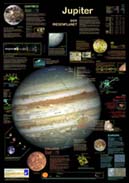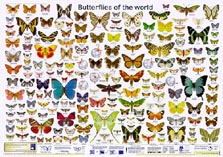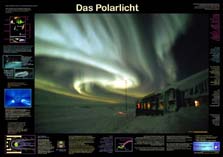Francisco Welter-Schultes, homepage.
.
Born
and raised in Germany, I passed a few years
hitchhiking in Central and South America, finding
myself studying in Göttingen, Germany, at
the beginning of the 1990s.
On the picture you see me and Christine, my girl-friend,
in December 1997 at Vejle Fjord in sunny Denmark. |
|
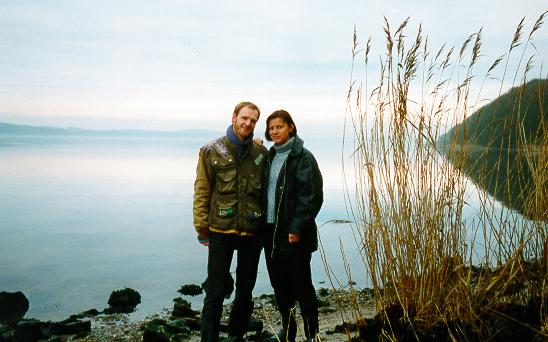
|
Currently
I am working at the
Zoological Institute of Göttingen University, mostly on posters,
sometimes on old zoological literature and, more rarely in the last years, on
land snails of Greece. My favourite ones belong to the genus Albinaria (Clausiliidae).
Things were a lot different before I knew Christine.
Arrival at Lavrakás, at the northern coast
of Gávdos, after a 4-hours one-person journey from the 8
km distant island in the background (Gavdopoúla) with an
inflatable boat in March, 1992. It is not recommended to repeat
such adventures - a few minutes later and I would have gone to Libya
with the uprising NE storm. |
|
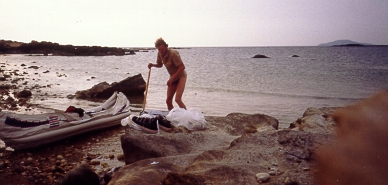
|

|
Francisco
Welter-Schultes
Zoologisches Institut der Universität
Berliner Str. 28
D-37073 Göttingen, Germany
|
|
I am working in the Abteilung Morphologie und Systematik, which
is one of the departments of the Zoologisches Institut der Universität Göttingen. My e-mail
account is provided by the Gesellschaft
für Wissenschaftliche Datenverarbeitung Göttingen (GWDG). Christine works in a church community in Göttingen.
1996-2000 I received a PhD scholarship from the Evangelisches Studienwerk.
Links to connected websites:
List of publications
- Albinaria research
- Albinaria bibliography
- Albanian non-marine
molluscs - Flying
snails paper - Albinaria
terebra paper
Per Anhalter durch Südamerika
- Batavieren race/Run 4 Fun
www.planetposter.de www.animalbase.org
Planet Poster Editions
Planet Poster Editions was founded in 1998 by Ralph Krätzner and myself,
when we published our first poster Life
on Earth in English language. As scientists we did not even consider the
possibility that German-language posters could pay off. But then after the poster
was printed, we sold so many posters in the Göttingen bookshops that we
were able to pay the printing costs even before the invoice of the printer was
delivered to us. Few months later we printed the Geman-language version of that
poster, Lebendiger Planet,
of which we sold thousands in the following years and which kept ebing our best-selling
product. More information about geology in German language on our information
pages (Infoseite Lebendiger
Planet), each stage has its homepage with detailed information:
Archaikum/Erdurzeit,
Proterozoikum,
Kambrium,
Ordoviz,
Silur,
Devon,
Karbon,
Perm, Trias,
Jura, Kreide,
Tertiär/Quartär.
As years passed by, we continuously issued new posters on astronomy, biology,
paleontology and other topics such as German
railway engines.
These are the first posters we have produced since 1998, with Ralph Krätzner
and other co-authors. Size A1, 594 x 841 mm. We are continuously producing more.
The complete collection can be seen at www.planetposter.de.
One of my most time intensive works in the past years was the compilation of
a map of the world in original scripts. This map was printed in January
2006 and can be seen at the Planet Poster website (Map
of the world). From this map I took screenshots and created many pages containing
of country maps of all countries of the world (maps
index page in German and in English).
After having produced and sold posters for several years we realized that we
had earned more money than we ever needed. We decided to build the second biggest
solar power plant in Göttingen. The story was more or less this
one:
In these times Germany had a socialist/green government which had passed some
very successful laws to support alternative energies, among which was solar
energy. These laws formed the base of Germany's success in developing technology
for alternative energies in the coming years. Some day in May 2005 chancellor
Schröder announced that he did not like his job any more (mainly because
the conservative CDU blocked practically everything and the socialist SPD had
lost many local elections), and from the opinion polls a conservative/liberal
victory for the coming federal elections in September 2005 seemed to be inevitable.
Immediately at this same day I saw that it was the last chance to invest in
alternative energies, because the conservatives and liberals were against alternative
"green" energies and had declared that they would restore the support
of nuclear energy which had been stopped by the socialist/green government.
So I decided to act immediately, to invest in solar energy (which was the easiest
way to invest in the alternative energy section in a city like Göttingen)
before the laws would be changed. The first step was to find a roof in the city
for the panels of such a solar power station.
A few days later the GWG society promised us to provide a roof on
one of their buildings (GoeTec
building solar power plant page in German language). Some tricky
moths with contracts and financial stuff followed, buerocracy is
very important in Germany. Another building for a smaller plant
was provided by the Lutheran Church, where Christine worked as a
secretary (Kindergarten
solar plant page in German language). Both stations were finally
installed in the last months of 2005.
The two investments were successful, the produced energy exceeded
the expected values on which the economic calculations were based
(more
information on GoeTec energy production here).
|
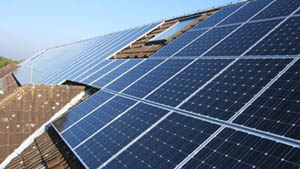
GoeTec solar power plant, the second biggest of this kind in
Göttingen (in 2006), 35.5 kWpeak, 260 m2 area covered, 192
panels.
|
Only several months later the conservatives saw that the "green"
laws to support alternative energies were highly intelligent and Angela Merkel,
the new chancellor, announced that they should not be changed. Conservatives
and liberals did not obtain a majority in the elections in September 2005 so
that the conservatives had to collaborate with the socialists for the coming
years. In fact, the conservatives had learned a lot from the green movement
and realized that investing in alternative energies did not have much do to
with green hippie dreams but rather with technological progress, future and
work for thousands of people - while investing money in nuclear energy produced
only little work for people and prevented the state from financially supporting
new future technologies.
When our solar power plants were installed, 4 persons had work for several weeks.
From then on, the plants are expected to work for about 40 years or more without
that much would have to be done on the roofs.
AnimalBase project/EZOOLO.
In 2003 we started a joint project of the Zoological Institute and our University
Library, to digitize all taxonomically relevant old zoological literature and
place it free in the internet. The animals described in the old literature are
contained in a new database. The name of this database is Animalbase.
The problem of taxonomic work in zoology is often the very difficult access
to the old literature, which for the public in some cases is only present in
very few European libraries. In the past, scientists from New Zealand or Brazil
had to travel to Paris, London or Göttingen to verify original species
descriptions of animals of their countries. Of course this situation prevents
many studies from being done. For historical reasons Göttingen has one
of the best old zoological libraries in the world. A heritage of the kings of
Hannover.
Zootaxonomy is the science of animal names - it is required that names for
the 1.5 million currently known animal species must be stable over time and
not subjected to ongoing changes with advancing biological researches. There
are many species on which specialists work only very few times in a century.
And the names must be unique for every species. Otherwise any communication
between biologists would be nearly impossible.
This problem arose in the 1700s when the number of known animal species had
increased from 500 in Aristoteles times to more than 4000.
It was even more problematic with plants. In medical receipts pharmacists could
not tolerate misunderstandings concerning the identity of the medical plants
- which led the botanist Carl Linnaeus to invent a clear and concise nomenclatural
system for plants in 1753. Five years later he adopted this system for animals.
It was widely accepted shortly after. One of the basic rules of this system
is the priority rule which states that for every animal, the first introduced
name in the Linnean system shall be valid. Until today - despite decades of
molecular researches - no better system has been proposed, and so we have the
situation that the old literature from 250 years ago is still up-to-date because
we still use the names and have to know which name corresponds to which animal.
So if somebody discovers in a special study that an animal species consists
in reality of two species which do not cross-breed in nature, perhaps an insect
one with black and one with white feet, one of the two species has to get a
new name. But which one? And which one will keep the old name? They need to
consult the original literature and see whether in 1775 or whenever the insect
was described, the described or figured animal had black or white feet. Such
problems happen every day in zoology.
Another problem are names that were not based on reliable or valid descriptions.
It is necessary to discover such cases as early as possible - because if the
names are not introduced correctly, at least some zoologists will not accept
them and use other names - this will inevitably lead to many misunderstandings
and scientific energy would be wasted. For example when going through the original
literature, we discovered that the name Torpedo, an important fish genus
name traditionally attributed to Houttuyn 1764, was not correctly introduced
and that whenever the name had been used, nobody had verified the original description
by Houttuyn. So another genus name had to be found for the fish genus.
The worst case happened to the crocodiles in the 1920s.
They discovered that the description of the Nile crocodile Crocodilus niloticus
was probably based on a mixture of two American species - all the names
of the crocodiles had to be changed, provoking a chaos resulting in some zoologists
accepting some names, others accepting other names for the same species. Until
today there are no definite and commonly accepted scientifig names for several
crocodile species and scientists have to work with English vernacular names.
All this was only because no crocodile specialist had had the chance to read
the very rare original literature before. They would have found it in Leiden,
Paris, London and Göttingen.
Between 2003 and 2005 we digitized some 400 old works, together 100,000 pages.
In 2005 we had more than 12000 names entered by hand, directly from the original
descriptions. Most names were linked to their original descriptions in the old
literature dating from 1757 to 1770. We intended to proceed further and cover
the literature until about 1820.
Crete, Turkey and snails.
Since 2000 I have not had as much time to work on snails of Crete as I had before.
I also drifted to Turkey where I had nice cooperations with Turkish malacological
colleagues reasulting in a few joint projects and expeditions in western Turkey
(1998, 2002 and 2004). I also had the chance to analyse land snails from the
Uluburun shipwreck off the southern Turkish coast, in the Bodrum Museum of Underwater
Archaeology. But unfortunately the Turkish archaeologists did not like that
I would publish the main results of this study.
I like Crete, but unfortunately the Greek island has lost a lot of its fascination
in the past 2 decades. Its nature was exploited by Cretans who did not care
about the beauty of their island. With Crete being full of cars, some day it
will look like any other industrialized country. There are still some nice places,
far away from the roads and from the burning garbage mountains, and many people
hope that they will not disappear too quickly.
In 1992 I spent 4 weeks
on Gavdos island, S of Crete, collecting data for my diploma thesis on the snails
there.
Together with Dhimitër Dhora from Shkodër University I compiled a
list of Albanian molluscs.
These are snails on which I have been working on my Ph D thesis. Click
here for a bibliography on Albinaria
snails. The page
on the Albinaria research
project is from 2002, but still largely up-to-date.

|
|

|
Albinaria hippolyti |
|
Albinaria violacea |
Photos by V. Wiese, Haus der Natur Cismar.
And everything.
My own hitchhiker's stories of when I was hitchhiking from North to South
America (1987 to 1990) are written down here
(in German).
In 1997 I started to practice running. Highlights were the Batavieren
Races from Nijmegen to Enschede, where our team Run4Fun participated several
times (my own web page about
Run4Fun). The picture shows myself at relay point 1 after midnight in
Nijmegen, one second before I started to run the second stage in 1999. Sabine
(coming in left), the previous runner who has just arrived at the relay point,
is handing me the shirt with the electronic time chip inside. The loudspeaker
(right) announces the numbers of the teams that are approaching the relay point.
We also participated in 2000, 2003, 2004 and 2005.
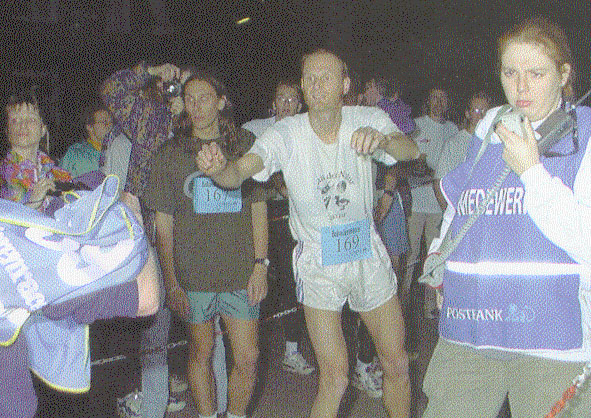
Batavierenrace April 1999, second stage at 01:15 h in the
night.
1000 m race in Göttingen, 05-05-2007, after
300 m.
There was some wind and I was happy to have made it in 2:59,17 min.
I usually run these distances in the stadium without shoes. |
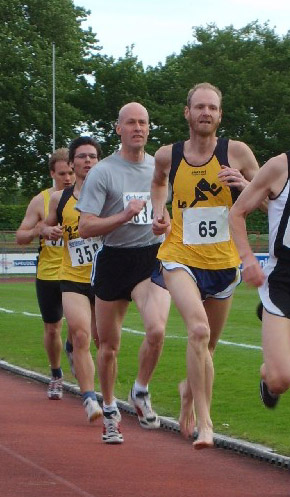
|
Autobiography in German language:
Umweg nach Cayenne
Links zu den Einzelseiten in Umweg nach Cayenne:
01 02 03 04 05 06 07 08 09 10 11 12 13 14 15 16 17 18 19 20 21 22 23 24 25 26 27 28 29 30 31 32 33 34 35 36 37 38 39 40 41 42 43 44 45 46 47 48 49 50 51 52 53 54 55 56 57 58 59 60 61 62 63 64 65 66 67 68 69 70 71 72 73 74 75 76 77 78 79 80 81 82 83 84 85 86 87 88 89 90 91 92 93 94 95 96 97 98 99 100 101 102 103 104 105 106 107 108 109 110 111 112 113 114 115 116 117 118 119 120 121 122 123 124 125 126 127 128 129 130 131 132 133 134 135 136 137 138 139 140 141 142 143 144 145 146 147 148 149 150 151 152 153 154 155 156 157 158 159 160 161 162 163 164 165 166 167 168 169 170 171 172 173 174 175 176 177 178 179 180 181 182 183 184 185 186 187 188 189 190 191 192 193 194 195 196 197 198 199 200 201 202 203 204 205 206 207 208 209 210 211 212 213 214 215 216 217 218 219 220 221 222 223 224 225 226 227 228 229 230 231 232 233 234 235 236 237 238 239 240 241 242 243 244 245 246 247 248 249 250 251 252 253 254 255 256 257 258 259 260 261 262 263 264 265 266 267 268 269 270 271 272 273 274 275 276 277 278 279 280 281 282 283 284 285 286 287 288 289 290 291 292 293 294 295 296 297 298 299 300 301 302 303 304 305 306 307 308 309 310 311 312 313 314 315 316 317 318 319 320 321 322 323 324 325 326 327 328 329 330 331 332 333 334 335 336 337 338 339 340 341 342 343 344 345 346 347 348 349 350 351 352 353 354 355 356 357 358 359 360 361 362 363 364 365 366 367 368 369 370 371 372 373 374 375 376 377 378 379 380 381 382 383 384 385 386 387 388 389 390 391 392 393 394 395 396 397 398 399 400 401 402 403 404 405 406 407 408 409 410 411 412 413 414 415 416 417 418 419 420 421 422 423 424 425 426 427 428 429 430 431 432 433 434 435 436 437 438 439 440 441 442 443 444 445 446 447 448 449 450 451 452 453 454 455 456 457 458 459 460 461 462 463 464 465 466 467 468 469 470 471 472 473 474 475 476 477 478 479 480 481 482 483 484 485 486 487 488 489 490 491 492 493 494 495 496 497 498 499 500 501 502 503 504 505 506 507 508 509 510 511 512 513 514 515 516 517 518 519 520 521 522 523 524 525 526 527 528 529 530 531 532 533 534 535 536
List of some selected publications.
I am specialized in the land snail Albinaria,
but many papers deal with other subjects, such as other snails, bibliographies,
turtles, botanics or even linguistics. Click here for a complete
list of my publications.
- WELTER-SCHULTES, W. (1992): Notes on the taxonomy of
Albinaria of Nísos
Día, Crete (Gastropoda: Clausiliidae). -- Biologia Gallo-hellenica
19 (1): 55-61 [sic!].
- SCHILTHUIZEN, M., WELTER-SCHULTES, F. W. & WIESE, V. (1993): A revision of the
polytypic Albinaria hippolyti (BOETTGER
1878) from Crete (Gastropoda Pulmonata: Clausiliidae). -- Zoologische Mededelingen
67 (9): 137-157.
- WELTER-SCHULTES, F. W. & WIESE, V. (1993): Die Gattung Albinaria auf Kreta: X. Die Landschneckenfauna
der Paximádia-Inseln vor Südkreta (Nómos Rethinmís).
-- Schriften zur Malakozoologie 6: 51-54.
- BUTOT, L. J. M. & WELTER-SCHULTES, F. W. (1994):
Bibliography of the mollusc fauna of Greece, 1758-1994. -- Schriften zur Malakozoologie 7: 1-160.
- SCHILTHUIZEN, M., WELTER-SCHULTES, F. W. & WIESE, V. (1994): A revision of the
polytypic Albinaria hippolyti (BOETTGER
1878) from Crete (Gastropoda Pulmonata: Clausiliidae). - in: SCHILTHUIZEN,
M.: Differentiation and hybridisation in a polytypic snail: inserted reprint
p. 64[a] -- 178 pp. Leiden. (Proefschrift [Ph. D. thesis]).
- WELTER-SCHULTES, F. W. (1995): La végétation
de l'île de Gavdos (Grèce), la plus méridionale de l'Europe.
Influence de facteurs historiques et humains. -- Biologia Gallo-hellenica
21 (2): 189-201 [sic!].
- WELTER-SCHULTES, F. W. (unpublished, 1996): Die Landschnecken
der griechischen Insel Gávdos. Morphologische, anatomische, ökologische
und biogeographische Studien auf der südlichsten Insel Europas. --
Unveröffentlichte Diplomarbeit, II. Zoologisches Institut der Universität
Göttingen.
- RIEDEL, A. & WELTER-SCHULTES, F. W. (1996): Eine
neue Gyralina-Art aus
Albanien (Gastropoda: Zonitidae). -- Schriften zur Malakozoologie 9: 17-20.
- DHORA, DH. & WELTER-SCHULTES, F. W. (1996): Bibliography
of the non-marine molluscs of Albania. -- Schriften zur Malakozoologie 9: 32-89.
- DHORA, DH. & WELTER-SCHULTES, F. W. (1996): List
of species and atlas of the non-marine molluscs of Albania. -- Schriften zur Malakozoologie 9: 90-197.
- WELTER-SCHULTES, F. W. (1997): Paleogeography and Albinaria distribution in central
Crete - an approach to their evolutionary history? -- Heldia 4 (5): 62-64.
München.
- KIRCHNER, CH., KRÄTZNER, R. & WELTER-SCHULTES,
F. W. (1997): Flying snails - how far can Truncatellina
(Pulmonata: Vertiginidae) be blown over the sea?
-- Journal
of Molluscan Studies 63: 479-487. London. (Abstract)(click here for the text of this paper)
- WELTER-SCHULTES, F. W. (1998): Die Landschnecken der
griechischen Insel Gávdos, der südlichsten
Insel Europas. -- Schriften zur Malakozoologie 12: 1-120.
- WELTER-SCHULTES, F. W. (1998): Albinaria
land snails in central and eastern Crete: distribution
map of the species (Gastropoda: Clausiliidae). -- Journal of Molluscan Studies 64: 275-279.
(Abstract).
- WELTER-SCHULTES, F. W. (1998): Human-dispersed land snails
in Crete, with special reference to Albinaria (Gastropoda: Clausiliidae). -- Biologia Gallo-hellenica 24 (2):
83-106.
- WELTER-SCHULTES, F. W. (1999): Systematisches Conchylien-Cabinet
von Martini und Chemnitz (1837-1920), bibliography of the volumes in Göttingen.
-- Archives of Natural History 26 (2): 157-203.
- WELTER-SCHULTES, F. W. & WILLIAMS, M. R. (1999):
History, island area and habitat availability determine land snail species
richness of Aegean islands. -- Journal of Biogeography 26 (2): 239-249.
- WELTER-SCHULTES, F. W. (1999): Die vier Albinaria-Arten westlich von Kalí Liménes. -- Schriften zur
Malakozoologie 13: 66-78.
- DHORA, DH. & WELTER-SCHULTES, F. W.(1999): Mollusc
cenoses from different environments in Albania. -- Schriften zur Malakozoologie
13: 61-65.
- DHORA, DH. & WELTER-SCHULTES, F. W. (1999): Clausiliidae
of Albania: recent finds and biogeographical evaluations (Gastropoda, Pulmonata).
-- Biologia Gallo-hellenica 25 (1): 15-24.
- WELTER-SCHULTES, F. W. (1999): The land snails of the
threatened island of Gavdopoula, with description of an endemic Mastus species (Gastropoda: Enidae).
-- Biologia Gallo-hellenica 25 (2): 91-104.
- WELTER-SCHULTES, F. W. (2000): Approaching the genus
Albinaria in Crete from
an evolutionary point of view (Pulmonata: Clausiliidae). -- Schriften zur
Malakozoologie 16: 1-208.
- WELTER-SCHULTES, F. W. (2000): The pattern of geographical
and altitudinal variation in the land snail Albinaria
idaea from Crete (Gastropoda: Clausiliidae). --
Biological Journal of the Linnean Society 71: 237-250.
- WELTER-SCHULTES, F. W. (2000): The paleogeography of
late Neogene central Crete inferred from the sedimentary record combined
with Albinaria land snail
biogeography. -- Palaeogeography, Palaeoclimatology, Palaeoecology 157: 27-44.
- MEESKE, A.-C. M., SNIESHKUS, E. & WELTER-SCHULTES,
F. W. (2000): Aufzucht und Wachstumsanalysen der Europäischen Sumpfschildkröte
(Emys orbicularis) aus
Litauen. --Salamandra 36 (2): 89-102.
- WELTER-SCHULTES, F. W. & RICHLING, I. (2000): Palaeoenvironmental
history of the Holocene volcanic crater lake Lago d'Averno (central southern
Italy) inferred from mollusc deposits. -- Journal of Quaternary Science
15: 805-812.
- WELTER-SCHULTES, F. W. (2000): Spatial analysis of shell
parameters suggests low species number of Mastus (Gastropoda: Pulmonata:
Enidae) in central and eastern Crete. -- Folia Malacologica 8 (2): 151-160.
Poznan.
- NEUBERT, E., ÖRSTAN, A. & WELTER-SCHULTES, F.
W. (2000): The land snails of the area between Kas and Demre, with special
reference to Albinaria
(Gastropoda, Pulmonata, Clausiliidae). -- Basteria 64: 105-123.
- WELTER-SCHULTES, F. W. (2001): Land snails from an ancient
shipwreck: the need to detect wreck-independent finds in excavation analysis.
-- Journal of Archaeological Science 28: 19-27.
- WELTER-SCHULTES, F. W. (2001): Spatial variations in
Albinaria terebra land
snail morphology in Crete (Pulmonata: Clausiliidae): constraints for older
and younger colonizations?-- Paleobiology 27 (2): 348-368. (click here to download the text of this paper)
- GRÜGER, E., THULIN, B., MÜLLER, J., SCHNEIDER,
J., ALEFS, J. & WELTER-SCHULTES, F. W. (2002): Environmental changes
in and around Lake Avernus in Grrek and Roman times. -- pp. 240-273 in:
JASHEMSKI, W. F. & MEYER, F. G. (ed.): The natural history of Pompeii.
- pp. i-xxiii, 1-502. Cambridge University Press, Cambridge.
Complete list of publications
A more recent picture taken in Göttingen
showing me with Christine.
Francisco Welter-Schultes
Zoologisches Institut
der Universität
Berliner Str. 28
D-37073 Göttingen, Germany
Phone: +49 551
395536
Fax: +49 551 395579
(please indicate "F. Welter-Schultes")
E-mail:

Thanks for stopping by. |
|

|
Last modified 8.5.2007.





